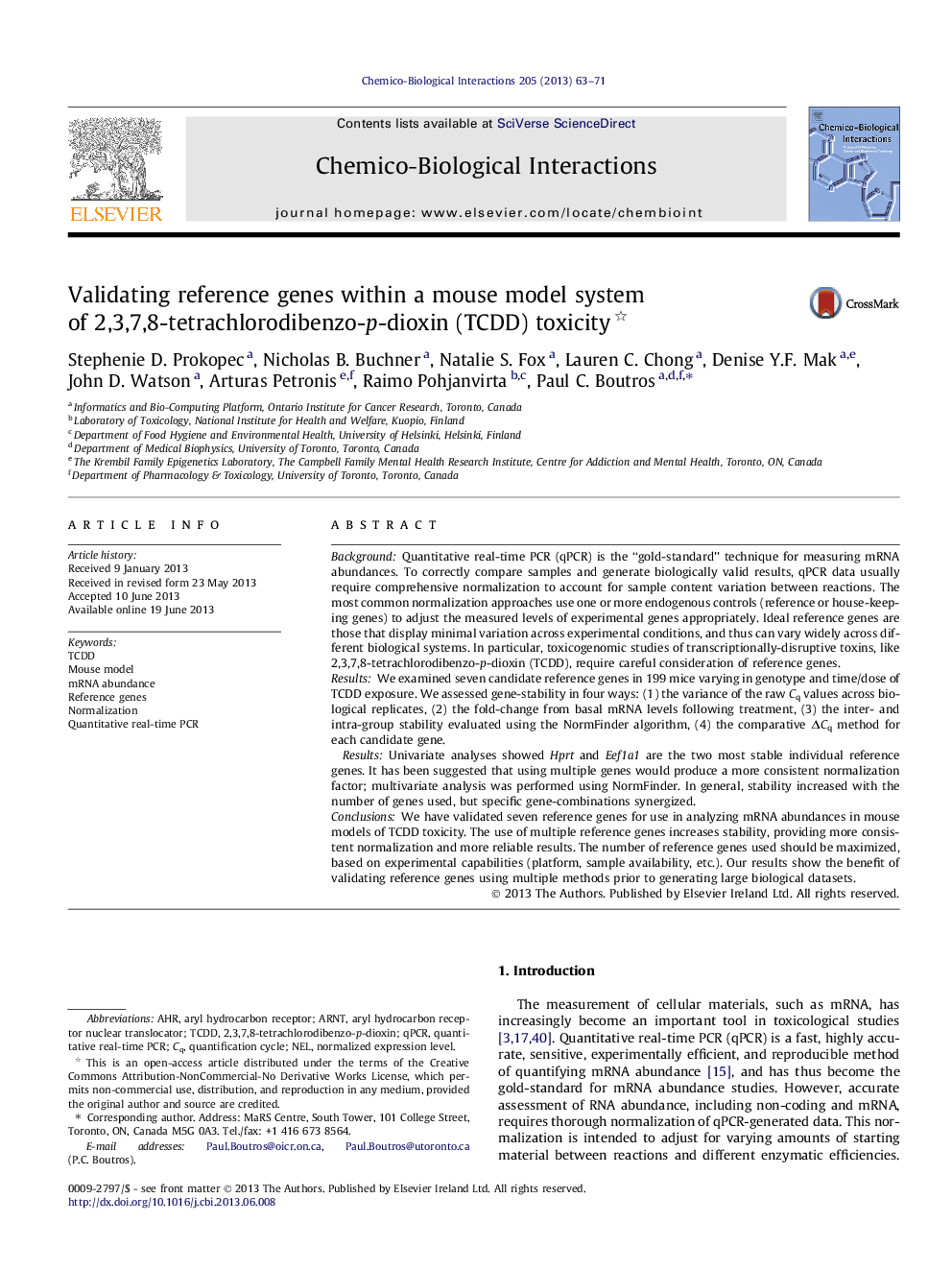| کد مقاله | کد نشریه | سال انتشار | مقاله انگلیسی | نسخه تمام متن |
|---|---|---|---|---|
| 5848211 | 1130144 | 2013 | 9 صفحه PDF | دانلود رایگان |
عنوان انگلیسی مقاله ISI
Validating reference genes within a mouse model system of 2,3,7,8-tetrachlorodibenzo-p-dioxin (TCDD) toxicity
دانلود مقاله + سفارش ترجمه
دانلود مقاله ISI انگلیسی
رایگان برای ایرانیان
کلمات کلیدی
AHRqPCRTCDDARNT2,3,7,8-Tetrachlorodibenzo-p-dioxin - 2،3،7،8-تترا کلریدیبنزوپتوفان دیوکسینaryl hydrocarbon receptor nuclear translocator - اتمسفر هسته ای گیرنده آرویل کربنNEL - درmRNA abundance - فراوانی mRNAMouse model - مدل موشNormalization - نرمالیزاسیون یا عادی سازیquantitative real-time PCR - واکنش زنجیره ای پلیمراز واقعی در زمان واقعیquantification cycle - چرخه محاسبهReference genes - ژنهای مرجعaryl hydrocarbon receptor - گیرنده آرویل هیدروکربن
موضوعات مرتبط
علوم زیستی و بیوفناوری
علوم محیط زیست
بهداشت، سم شناسی و جهش زایی
پیش نمایش صفحه اول مقاله

چکیده انگلیسی
BackgroundQuantitative real-time PCR (qPCR) is the “gold-standard” technique for measuring mRNA abundances. To correctly compare samples and generate biologically valid results, qPCR data usually require comprehensive normalization to account for sample content variation between reactions. The most common normalization approaches use one or more endogenous controls (reference or house-keeping genes) to adjust the measured levels of experimental genes appropriately. Ideal reference genes are those that display minimal variation across experimental conditions, and thus can vary widely across different biological systems. In particular, toxicogenomic studies of transcriptionally-disruptive toxins, like 2,3,7,8-tetrachlorodibenzo-p-dioxin (TCDD), require careful consideration of reference genes.ResultsWe examined seven candidate reference genes in 199 mice varying in genotype and time/dose of TCDD exposure. We assessed gene-stability in four ways: (1) the variance of the raw Cq values across biological replicates, (2) the fold-change from basal mRNA levels following treatment, (3) the inter- and intra-group stability evaluated using the NormFinder algorithm, (4) the comparative ÎCq method for each candidate gene.Univariate analyses showed Hprt and Eef1a1 are the two most stable individual reference genes. It has been suggested that using multiple genes would produce a more consistent normalization factor; multivariate analysis was performed using NormFinder. In general, stability increased with the number of genes used, but specific gene-combinations synergized.ConclusionsWe have validated seven reference genes for use in analyzing mRNA abundances in mouse models of TCDD toxicity. The use of multiple reference genes increases stability, providing more consistent normalization and more reliable results. The number of reference genes used should be maximized, based on experimental capabilities (platform, sample availability, etc.). Our results show the benefit of validating reference genes using multiple methods prior to generating large biological datasets.
ناشر
Database: Elsevier - ScienceDirect (ساینس دایرکت)
Journal: Chemico-Biological Interactions - Volume 205, Issue 1, 5 September 2013, Pages 63-71
Journal: Chemico-Biological Interactions - Volume 205, Issue 1, 5 September 2013, Pages 63-71
نویسندگان
Stephenie D. Prokopec, Nicholas B. Buchner, Natalie S. Fox, Lauren C. Chong, Denise Y.F. Mak, John D. Watson, Arturas Petronis, Raimo Pohjanvirta, Paul C. Boutros,